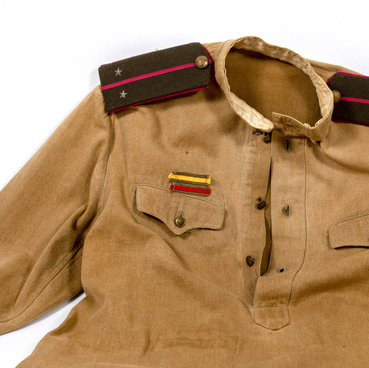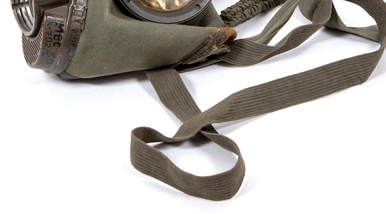Items found during search operations often help identify their owner. Such things can be classified into circumstantial evidence and direct evidence. Mugs, spoons, pots are deemed as circumstantial evidence; whereas documents, Red Army soldiers' ID tags (the so called ‘death medallions’), and Wehrmacht soldiers' dog tags — as direct evidence.
Military dog tags have been used by the German army since the middle of the 19th century. In 1869, the Prussian War Ministry issued an order that required every soldier to wear a tin dog tag on a chain/cord under the uniform, the tag indicated the owner’s battalion, unit, and serial number. In 1878, the shape of the tag was changed from rectangle to oval. In 1915, the size was established — 70 by 50 millimeters; it remained standard until 1945. These tags were used by the infantry, the Air Force, the Waffen-SS, the police, and the Wehrmacht Auxiliary Forces.
Since 1917, the identification information was indicated on both the top and the bottom halves of the dog tag. They were separated by three thin slits along the long side of the oval so that the dog tag could be broken in half — the bottom halves were collected to count the dead. In 1925, a small hole was added to the bottom half of the tag, so that these parts could be hooked on a metal ring and sent to Germany with the reports of the losses.
The tags were issued by the designated military unit. The abbreviated name of the unit, its official number, and the serial number of the soldier, which was given during the initial recruitment, was stamped onto both halves of the tin disk of the tag. All units generally stamped the same type of information on the tags: the abbreviation of the military unit on the top half; the soldier’s blood type and the serial number on the bottom. Names and surnames were not indicated on the tags.
Such complex system helped to identify the fallen soldiers and estimate the number of missing soldiers during the war. All the records and the accumulated halves of the tags were kept in the Wehrmacht Central Information Office for Casualties — Wehrmacht-Auskunft-Stelle (WASt) — in Berlin.
There, the soldiers' identities were established and the losses were accounted for. There are presently more than 100 million records of when and where the tags were issued, as well as about the unit designation, place of death, the time a person went missing, how the tag was found, etc. in the German Federal Archives, the successor agency of Wehrmacht-Auskunft-Stelle (WASt).
Military dog tags have been used by the German army since the middle of the 19th century. In 1869, the Prussian War Ministry issued an order that required every soldier to wear a tin dog tag on a chain/cord under the uniform, the tag indicated the owner’s battalion, unit, and serial number. In 1878, the shape of the tag was changed from rectangle to oval. In 1915, the size was established — 70 by 50 millimeters; it remained standard until 1945. These tags were used by the infantry, the Air Force, the Waffen-SS, the police, and the Wehrmacht Auxiliary Forces.
Since 1917, the identification information was indicated on both the top and the bottom halves of the dog tag. They were separated by three thin slits along the long side of the oval so that the dog tag could be broken in half — the bottom halves were collected to count the dead. In 1925, a small hole was added to the bottom half of the tag, so that these parts could be hooked on a metal ring and sent to Germany with the reports of the losses.
The tags were issued by the designated military unit. The abbreviated name of the unit, its official number, and the serial number of the soldier, which was given during the initial recruitment, was stamped onto both halves of the tin disk of the tag. All units generally stamped the same type of information on the tags: the abbreviation of the military unit on the top half; the soldier’s blood type and the serial number on the bottom. Names and surnames were not indicated on the tags.
Such complex system helped to identify the fallen soldiers and estimate the number of missing soldiers during the war. All the records and the accumulated halves of the tags were kept in the Wehrmacht Central Information Office for Casualties — Wehrmacht-Auskunft-Stelle (WASt) — in Berlin.
There, the soldiers' identities were established and the losses were accounted for. There are presently more than 100 million records of when and where the tags were issued, as well as about the unit designation, place of death, the time a person went missing, how the tag was found, etc. in the German Federal Archives, the successor agency of Wehrmacht-Auskunft-Stelle (WASt).

